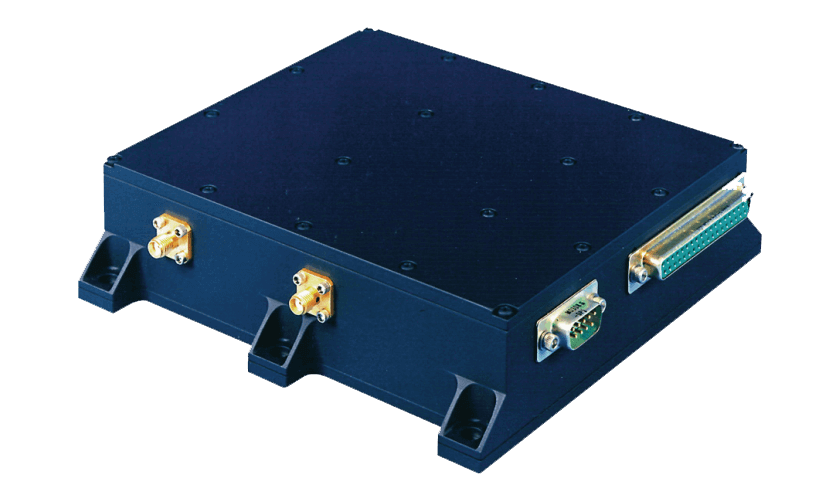Viceroy GPS Receiver

Superior positioning with 200+ years of on-orbit performance
General Dynamics’ Viceroy®-4 Global Positioning System (GPS) Spaceborne Receiver provides position, velocity, and time information for Low Earth Orbit (LEO) and Geostationary Earth Orbit (GEO) applications. The use of dual antennas for LEO enhances the performance and satellite visibility. Each of the 12 GPS channels can be assigned to either antenna. The design supports an RS-422 interface.
- Design based on legacy space qualified digital design
- 20 years of trouble-free spaceflight heritage
- Same reliable position, velocity, time, pseudorange and carrier phase at 1Hz
- Same form-factor and interface control as heritage Viceroy receiver
Features
General Dynamics’ Viceroy-4 Global Positioning System (GPS) Spaceborne Receiver provides position, velocity, and time information for Low Earth Orbit (LEO) and Geostationary Earth Orbit (GEO) applications. Performance and satellite visibility are enhanced through the use of dual antennas; each of the 18 GPS channels can be assigned to either antenna. The design supports RS-422 or MILSTD-1553 bus interfaces.
- Space Qualified Digital Design
- Full Spaceborne Capability
- Autonomous Operation
- Pseudorange and Integrated Carrier Phase at One Second Rate
- One PPS Clock Output Synchronized to GPS Time
- Radiation Hardened Static RAM
- Up to 12 Receive Tracking Channels
- 53 Cubic Inches
- 2.4 Pounds
- 20 to 35 VDC Operation
- Improved Radiation Hardened Digital Electronics
- 12 Channels Support All-in-View Tracking
- Dual Antenna – Any Channel Assigned to Either Antenna (LEO only)
- Fast Cold Start Mode Simplifies Integration and Autonomous Operation
- Low Signal Acquisition and Tracking Supports GEO Sidelobe Tracking
- Enhanced Resolution 1 Pulse per Second Output
Specifications
|
Viceroy-4 GPS Receiver Data Sheet
|
View Document
|
|---|---|
| Receiver Architecture |
12 channels with enhanced fast acquisition |
| Input/Output |
RS-422 serial I/O (standard) |
| Solution Accuracy | Autonomous Position: < 15 meters, 1 sigma (LEO) | < 100 meters, 1 sigma (GEO) Autonomous Velocity: < 0.1 meters/second, 1 sigma (LEO) | < 0.01 meters/second, 1 sigma (GEO) 1PPS time: < 100 ns, 1 sigma (typical) |
| Time to First Fix | LEO: 4 minutes, cold start GEO: 10 minutes, cold start |
| Orbital Dynamics | Altitude: approx 200 km to 2000 km (LEO) | approx 35,800 km (GEO) Velocity: up to 16,000 meters/second Acceleration: 1G |
| Optional and Custom Features | Single string or redundant configurations Precision internal reference Ovenized Crystal Oscillator (OCXO) External 10 MHz reference oscillator Time Strobe Input: < 100 ns, 1 sigma MEO and HEO Altitudes |
| Physical/Environmental | Size: 6.0” x 5.2” x 1.7” (152 x 132 x 43 mm) Weight: 2.4 lbs (1.1 kg) max DC Power: 8 W max; steady-state tracking (20-35 V) Vibration: 17 Grms Shock: 1750 G @ 500 Hz Temperature: -20°C to +60°C |



